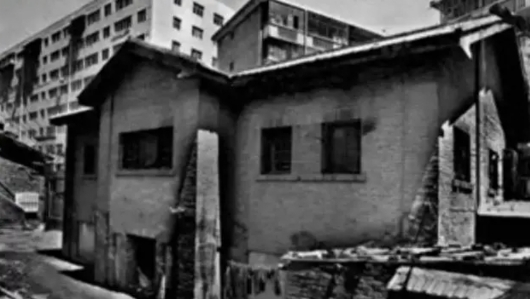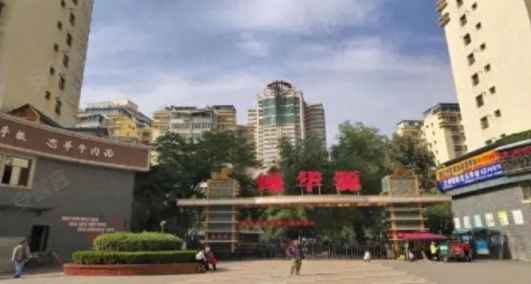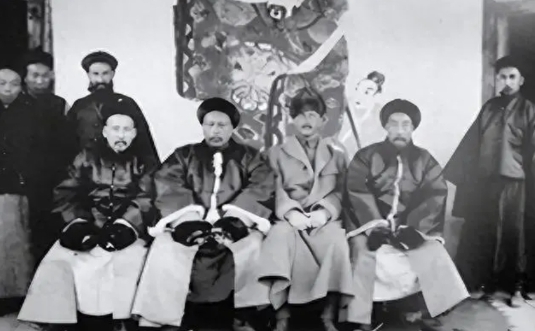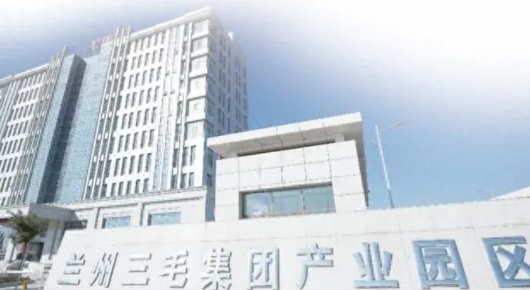Company Development
The Lanzhou First Woolen Mill
After the liberation of Lanzhou on August 26, 1949, military representatives took over the woolen mill of Yongxing Company. Three days later, the factory resumed production, an important event reported on the front page of the inaugural issue of the Gansu Daily. This marked the origin of what later became known as the “Lanzhou First Woolen Textile Factory,” also referred to as the Yi Mao Factory. The Yi Mao Factory was China’s first woolen mill and also the first factory in China to engage in Sino-foreign cooperation.

In the 1980s and 1990s, the woolen textile industry in Lanzhou experienced significant development, reaching its peak. After the 1970s, the Chinese government established a number of large-scale textile enterprises, one of which was the San Mao Factory. This new enterprise possessed advantages in investment and innovation that the older enterprises could not match. Over time, the San Mao Factory gained prominence while the Yi Mao Factory gradually fell behind.
In 1996, production activities at the Yi Mao Factory were intermittently carried out. Subsequently, in January 1998, the enterprise declared bankruptcy and its assets were auctioned off and sealed in December of the same year. By 2002, after nine auctions, all of its assets were sold for less than 20 million yuan. On August 29, 2002, the production area was sold to the Lanzhou Guofang Real Estate Company for 193 million yuan. In November 2002, the factory buildings and structures in the production area began to be dismantled. In March 2003, the employees of the enterprise left their positions through a buyout of their work experience. By September 2008, the two largest residential areas of the factory were unified and planned by the Lanzhou State-owned Assets Supervision and Administration Commission into residential communities, now known as the Xian Hua Fu (more commonly referred to as Xi Huayuan). This transformation marked the beginning of the large-scale development of high-end residential areas in Lanzhou.

Lanzhou Second Woolen Mill
During the tenure of Zuo Zongtang in the Shaan-Gan region, with the assistance of Hu Xueyan, he purchased a complete set of woolen weaving machines from Germany and hired German technicians in 1879 to transport them to China. On September 16, 1880, this batch of equipment was officially put into production, consisting of 1,200 spinning frames, primarily producing army cloth, army blankets, Spanish striped fabric, and other products, with a daily output of 20 pieces. This factory was not only China's first woolen mill but also the first Sino-foreign cooperative factory. It was renamed Lanzhou Woolen Mill in 1926. During the War of Resistance Against Japan, the Nationalist government's Military Affairs Department converted it into the First Branch of the Woolen Mill. In 1939, the factory suffered severe damage from Japanese air raids and was renamed the Second Woolen Mill in 1942. After liberation, it was finally named Lanzhou Second Woolen Mill.

Lanzhou Third Woolen Mill
The Sanmao Factory, completed in 1974, was the most advanced woolen mill in Gansu Province at that time, with a production capacity of 10,000 spindles. Since then, this newly established woolen mill gradually developed into a major force in the textile industry of Gansu Province. In 1995, the enterprise was selected as one of the 100 pilot projects for establishing a modern enterprise system by the State Council, and it successfully went public on the Shenzhen Stock Exchange in April 1997. In October 2015, the "exit city and enter park" construction project was completed, and the entire factory was relocated to the Sanmao Group Industrial Park in the Lanzhou New District. Since January 2015, the enterprise has been under the management of the Gansu Provincial State-owned Assets Investment Group Co., Ltd.

The Sanmao Factory is the only large-scale state-owned comprehensive textile enterprise in the northwest region of China. Its products are widely sold throughout the country and exported to over 20 countries and regions including the United States, Europe, Japan, South Korea, and Southeast Asia. The enterprise provides high-quality products and services to large state departments, the military, public security, judiciary, finance, tobacco, postal, telecommunications, aviation, and other major enterprises and institutions.
Editor:伏娅敏
